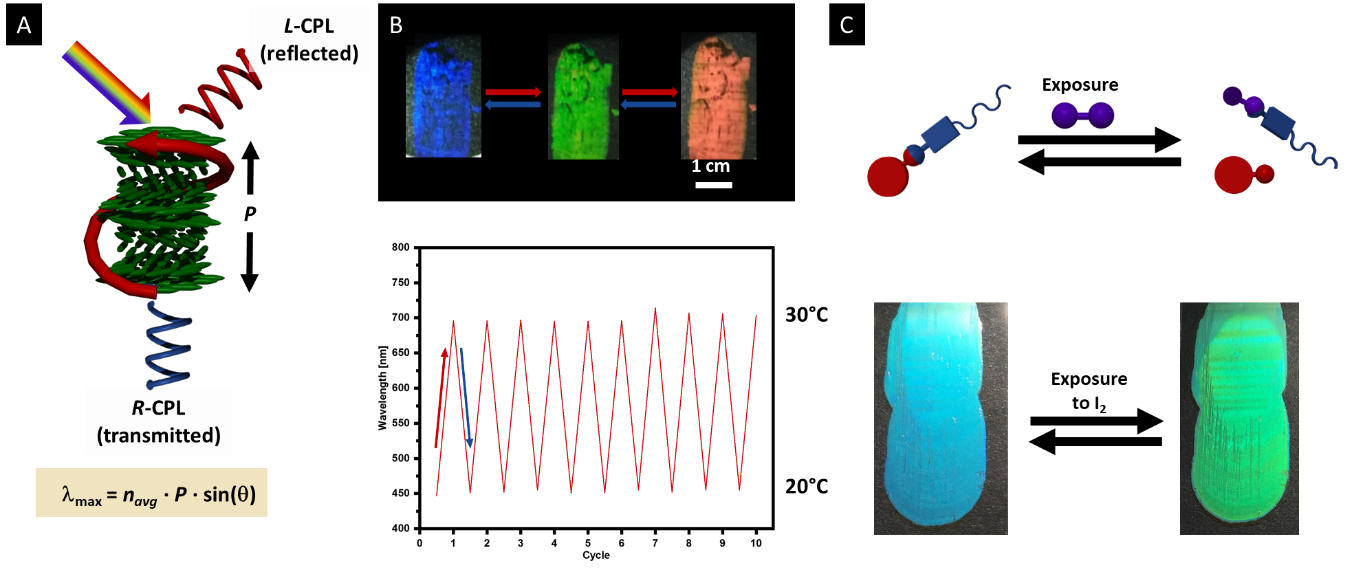Photonic Sensing
Chiral mesophases such as the chiral-nematic phase (also called cholesteric phase) are highly interesting with respect to photonic applications since they represent one-dimensional photonic crystals. Photonic crystals are materials with periodically changing refractive indices in one, two or three dimensions allowing them to selectively diffract certain wavelengths of light. For chiral-nematics, the reflected wavelength depends on the pitch (P) of the helical structure, the refractive index (navg) of the material and the angle of the incident light (sin(q)).

Figure 1: Schematic representation of the selective refraction of visible light at chiral-nematic structures (A) as well as representative figures of the temperature (B) and chemo-sensing (C).
The helical pitch corresponds to the repeating distance of a full 360° turn of the mesogens. When half of the pitch (P/2) of the chiral structure is in the region of the wavelength of visible light (Figure 1), the materials appear structurally coloured. Due to the chiral structure, the reflected light is circularly polarized with a handedness determined by the helical sense of the mesophase whereby a maximum of 50% of the incident light will be reflected. The light of the opposite handedness transmits through the film without loss of intensity. Since the structure of a chiral-nematic mesophase is flexible and can be affected by external stimuli it offers opportunities to use these dynamics for photonic sensing. In our group we use this structural flexibility for the sensing of temperature or biologically relevant gaseous analytes such as nitrous gases or carbon monoxide.
Recent Publication
"Cellulose nanocrystals in nanoarchitectonics – towards photonic functional materials" – M. Giese*, M. Spengler, Mol. Syst. Des. Eng. 2019, 4, 29-48.

